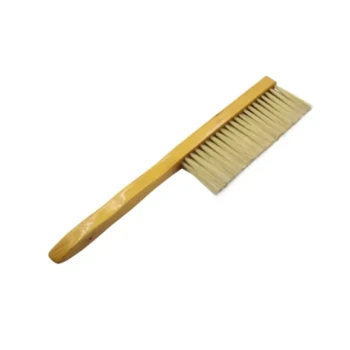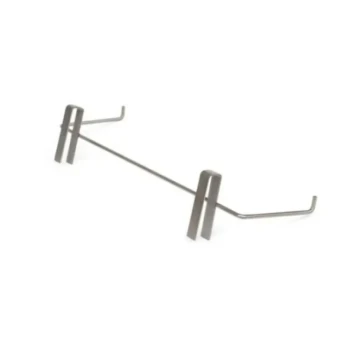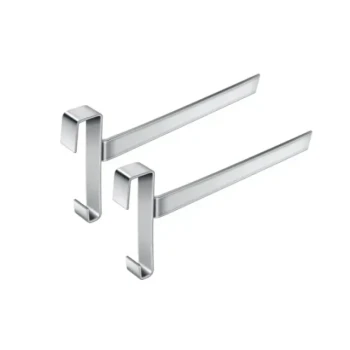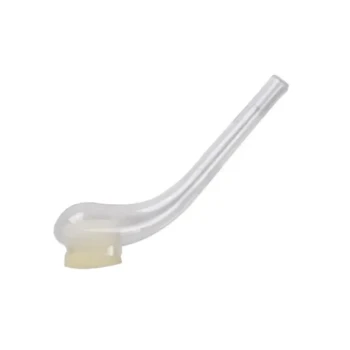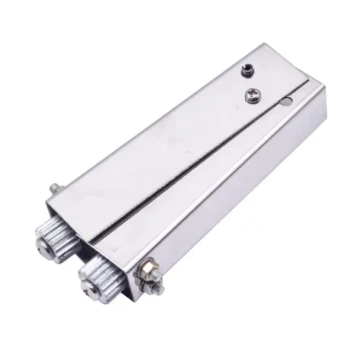At its core, a pollen trap is a device that gently scrapes pollen pellets from a returning forager's legs as she enters the hive. Beekeepers primarily use two designs to accomplish this: entrance-mounted traps, often called "front porch" traps, and bottom-mounted traps, which replace the hive's standard bottom board. Each design has distinct implications for hive health, ventilation, and ease of collection.
The choice between pollen traps is a strategic one. It balances the ease of installation and collection found in entrance-mounted traps against the reduced hive disruption and potentially better weather protection offered by bottom-mounted designs.
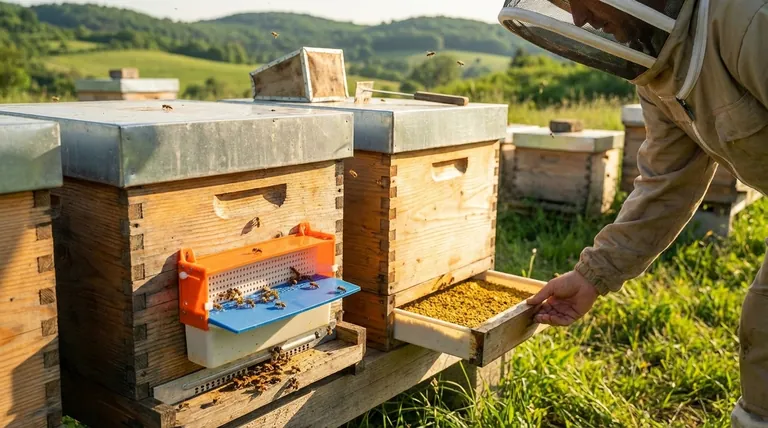
The Core Mechanics of Pollen Trapping
Before comparing designs, it's crucial to understand how they all function. The goal is to harvest pollen without unduly stressing the colony.
The Stripping Screen
All pollen traps rely on a screen or grid with precisely sized holes. These holes are large enough for a honey bee to squeeze through but small enough to knock the pollen pellets off her hind legs.
The dislodged pollen falls through a second, smaller screen into a collection tray below. This lower screen prevents the bees from accessing and retrieving the collected pollen.
The Collection Tray
This is the drawer or tray that catches the pollen. A well-designed tray will be ventilated to help reduce moisture but also protected from the elements to keep the collected pollen dry.
The Bypass Entrance
A critical feature of any good trap is a bypass or "open" setting. This provides an alternate entrance that allows bees to come and go without passing through the stripping screen. This is essential for turning the trap "off" to give the colony a break and for allowing larger drones and the queen to exit the hive.
The Two Main Trap Designs
Your choice will come down to one of two primary styles, each with its own set of benefits and drawbacks.
Type 1: Entrance-Mounted ("Front Porch") Traps
These are the simplest traps to install. They are typically made of wood or plastic and hang on the front of the hive, covering the main entrance. Bees returning to the hive are rerouted through the trap to enter.
- Advantages: They are very easy to install and remove without taking the hive apart. Collection is simple, as the drawer is at the front of the hive.
- Disadvantages: They can significantly increase congestion at the hive entrance. The collected pollen is more exposed to rain, and the design can sometimes restrict hive ventilation.
Type 2: Bottom-Mounted Traps
These traps, such as the popular Sundance style, are more integrated into the hive. They are designed as a complete replacement for your standard bottom board. The entire hive stack (brood boxes and supers) rests on top of the trap.
- Advantages: This design keeps the main hive entrance clear, reducing congestion. The collection drawer is underneath the hive, offering superior protection from rain and direct sun. They often provide better overall hive ventilation.
- Disadvantages: Installation is more involved, as you must lift your hive bodies to place the trap underneath. Collecting pollen requires you to bend down and pull the tray out from the rear or side of the hive.
Understanding the Trade-offs and Best Practices
Harvesting pollen is not a passive activity. It removes a vital source of protein from the colony and requires careful management.
Only Trap from Strong Hives
Never collect pollen from a weak or struggling colony. Pollen is the bees' primary source of protein, essential for raising new brood. Only strong, populous hives with abundant resources can spare the surplus.
Collect and Store Pollen Properly
Pollen has a high moisture content and will spoil or grow mold within a day at ambient temperatures. You must collect pollen daily. Immediately after collection, it should be frozen or dehydrated to preserve its quality.
Use the Bypass Feature Generously
Do not run a pollen trap 24/7. Most beekeepers trap for a few days and then leave the trap in bypass mode for a few days to allow the colony to replenish its own stores. The bypass is also essential for letting drones out of the hive.
Making the Right Choice for Your Apiary
Your goal will determine the best trap for your operation.
- If your primary focus is simplicity and occasional collection: An entrance-mounted trap is likely your best starting point due to its low initial effort and ease of use.
- If your primary focus is serious pollen harvesting with minimal hive disruption: A bottom-mounted trap is the superior choice for its efficiency and better protection of the harvest.
- If you manage hives in a wet climate: A bottom-mounted trap is highly recommended to protect the valuable pollen from moisture and spoilage.
By understanding these designs and their management requirements, you can select a trap that aligns with your beekeeping goals while safeguarding the long-term health of your colony.
Summary Table:
| Pollen Trap Type | Key Advantage | Main Disadvantage | Best For |
|---|---|---|---|
| Entrance-Mounted | Easy to install and remove | Can cause hive entrance congestion | Occasional collection, simplicity |
| Bottom-Mounted | Reduces hive disruption, protects pollen | Requires lifting hive bodies for install | Serious harvesting, wet climates |
Ready to Harvest High-Quality Pollen?
As a commercial beekeeper or distributor, the right equipment is critical for your operation's efficiency and profitability. HONESTBEE supplies durable, well-designed pollen traps and other essential beekeeping supplies through our wholesale-focused operations.
We help you choose the right tools to maximize your harvest while safeguarding your colony's health. Let's discuss how our equipment can benefit your apiary.
Contact HONESTBEE today for wholesale pricing and expert support.
Visual Guide
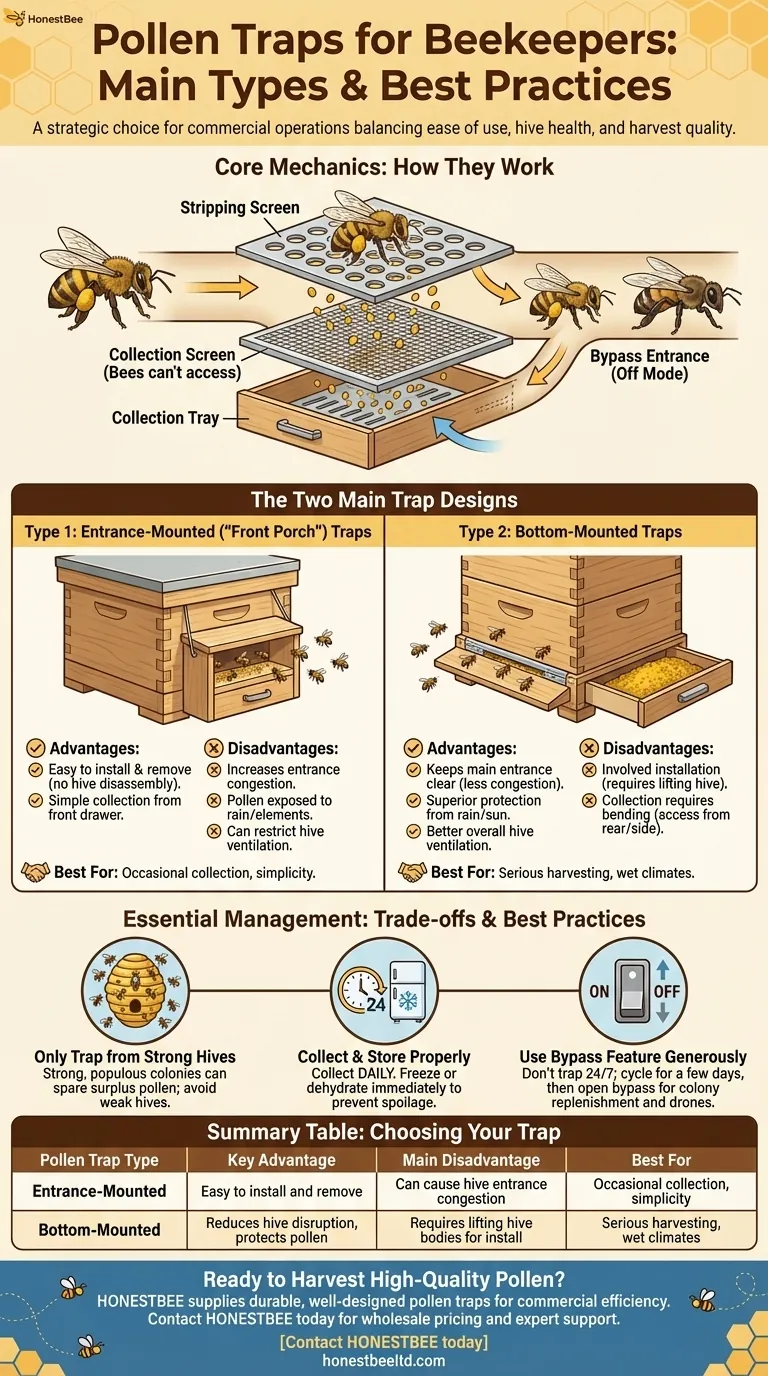
Related Products
- 30 cm Plastic Entrance Hole Bee Pollen Trap and Collector
- Removable Plastic Pollen Trap With Ventilated Tray for Bees Pollen Collector
- Plastic Bee Pollen Trap Strips Comb Catcher Collector
- Yellow Plastic Bucket Pail Perch for Beekeeping
- Long Langstroth Style Horizontal Top Bar Hive for Wholesale
People Also Ask
- What are the primary reasons beekeepers collect bee pollen? Boost Hive Health and Generate Income
- What are the main uses of bee-collected pollen? A Guide for Apiary Management and Product Sales
- How is pollen collected from beehives? A Guide to Harvesting with Pollen Traps
- What are the different types of pollen traps available? A Guide to Front-Porch & Bottom-Mounted Designs
- What are the key features of an effective pollen trap? Maximize Harvests & Protect Hive Health





